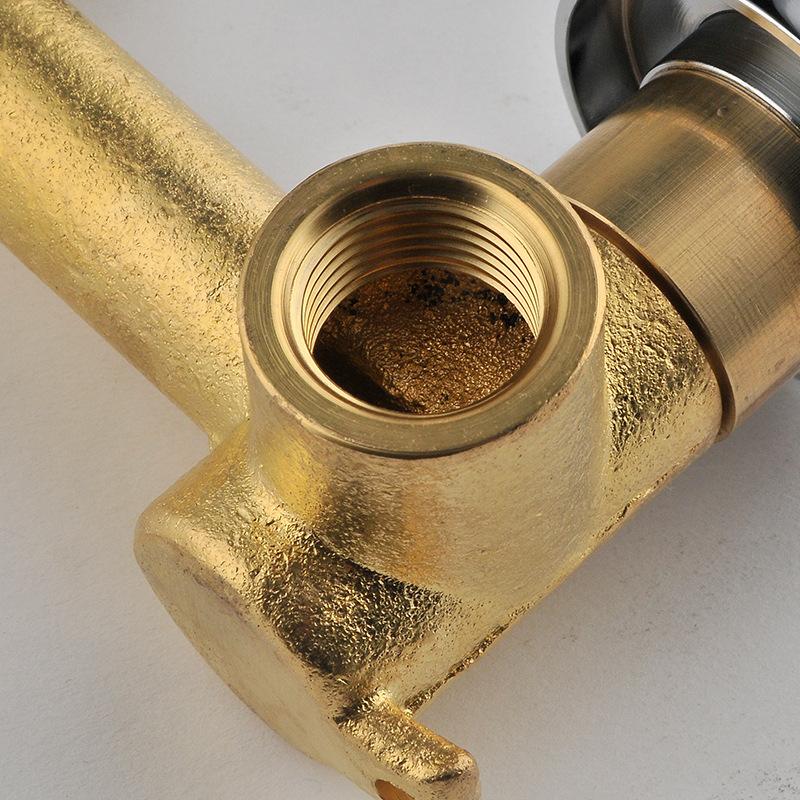What are the materials of the Kaiping faucet
The common materials for faucets in the market now include stainless steel, all plastic, brass, and zinc alloy materials.
1. Brass
Brass is a common material used in the manufacturing of faucets, processed from international standard H59/H62 copper, and cast using a steel mold for gravity casting. Its wall thickness is uniform, generally ranging from 2.5-3.0 millimeters.
The characteristics of brass faucets are: non rusting, durable, functional, and effective for water (the disadvantage is that they contain lead, which is a harmful metal to health. International standards require that the lead content in copper should not exceed 2.5%.
2. Stainless steel
Entering the 21st century, health has gradually become a new theme in modern life. Stainless steel is a health material that can be implanted into the human body, so kitchen and bathroom products mainly made of stainless steel have initially become popular in European and American countries.
However, due to the high hardness and strong resistance of stainless steel materials, it is difficult to manufacture and process, which seriously affects the mass production of stainless steel faucets. Therefore, the real price of 304 stainless steel faucets is even higher than that of copper materials.
Its characteristics are: healthy; All product materials are made of 304 stainless steel, which is rust free and lead-free. The faucet itself will not cause secondary lead pollution to the water source, which can harm human health and create a healthy environment for kitchen, bathroom, and daily water use.

3. Zinc alloy
Low level materials, zinc alloy has a lower density than copper, and the feel is not as heavy as copper faucets. From the inner wall, the surface of zinc alloy is easy to oxidize, and white oxide powder will appear on the surface.
The strength is much inferior to copper, the service life is not long, and the lead content is high. If a faucet is made of zinc alloy, it only takes 1 to 2 years to oxidize and rot.
Nowadays, zinc alloy is mainly used to manufacture faucet handles, which are made of zinc alloy die-casting and then chrome plated. Most faucet handles on the market are made of zinc alloy.
4. Engineering plastics
ABS plastic faucets have the characteristics of corrosion resistance, rust resistance, lead free, odorless, high pressure resistance, light weight, easy construction, and low price. They are a new type of green product.
The faucet is made of refined plastic, with a delicate design and simple and convenient equipment, which meets the national drinking and civilian drinking water standards.
Article source: Kaiping faucet http://www.clasito.net
-
04-13
What is the reason for installing a bubble on a flat faucet
I don# 039; T know if we have ever thought about why there are so many bubbles in the water flowing out of the faucet? Actually, this is mainly because the faucet is required with a bubble, which can
-
04-13
What are the surface treatment processes for faucets
In recent years, with the advancement of technology, there has been a wide variety of faucet products In order to match different styles of home design, faucets have become more colorful, and there ar
-
04-13
How to maintain and maintain a flat bathroom faucet
After choosing a preferred bathroom faucet, how to use and maintain it correctly is a headache and headache for many users In fact, as long as the installation, use, and maintenance are correct and ap
-
04-13
How to determine the height and orientation of the Kaiping bathroom faucet
Strict requirements should be placed on the height of the faucet, and attention should be paid to issues such as water leakage during installation Therefore, when installing a bathroom faucet, the con
